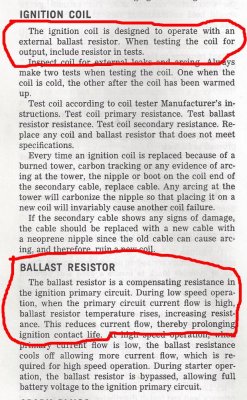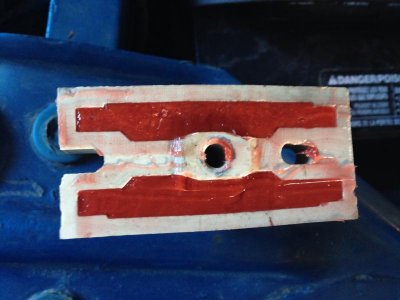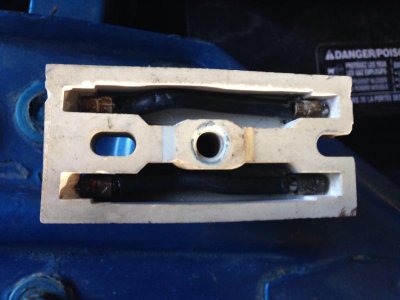......and to set minds strait the condenser is what protects the points....
Yes, I will give you that, the condenser does PLAY A PART in prolonging breaker point life. The breaker points are the ON/OFF switch for the primary ignition circuit. When the points are closed (switch is on), current begins flowing through the ballast resistor (which limits current to the coil) into the primary winding of the coil saturating the winding and flowing on through the points (resulting in arcing of the points as they make contact) and then flowing to GROUND.
When the points are opened (switch is off) current is interrupted (resulting in more arcing of the points as they break contact). This results in the collapse of the magnetic field in the primary winding of the coil which induces a voltage PULSE into the secondary (HIGH Voltage) side of the coil. This high voltage in the secondary circuit of the coil (about 30-40K volts) is then discharged through the coil Hi Voltage wire to the distributor cap and then routed to the appropriate spark plug by the rotor which aligns with one of the Hi Voltage towers on the distributor cap. The Hi voltage jumps the air gap of the spark plug to ground creating the "spark" that ignites the air/fuel mixture in the cylinder.
So, each time the breaker points OPEN or CLOSE an electrical arc is created which, over time destroys the breaker points. By limiting the circuit current (ballast resistor in series) point life is extended as well as coil life by reducing the heat build-up in the coil. The condenser does NOT pass DC current, it blocks it. So, the condenser is placed in PARALLEL with the breaker points. The condenser then acts as a "shock absorber" to the points as they OPEN and CLOSE which in turn ALSO helps to extend the breaker point life.
Below info is taken from my 1969 Factory Service Manual (FSM).

So you say, what is the difference between a "breaker point" system and the Mopar Performance Electronic conversion system? Not as much as you would think. The "Orange Box" that so many have on their cars is simply a "Transistor Switch" that has replaced the "breaker points". The "Reluctor and Magnetic Pickup Coil" inside the conversion distributor is now the "Trigger" to turn the transistor switch ON and OFF in the ECM or Orange Box. The big advantages of this system are that the Transistor switch does NOT have any arcing or burning of the contacts, so life is extended tremendously. Also the transistor can supply much more consistent, accurate pulses at high engine speeds because there is NO contact bounce as there was with "breaker points". The transistor switch is also chosen specifically to match and handle the expected amount of current in the circuit and is mounted on a "Heat Sink" to dissipate the heat built up due to the current flow in the primary ignition circuit. When you upgrade from Orange to a "Chrome Box" or the race "Gold Box", you are getting an even better "Transistor Switch" which is capable of faster switching times (think higher engine RPM's) and is also capable of withstanding even higher amounts of primary circuit current, and heat dissipation.

























